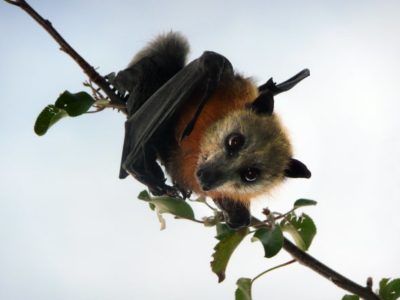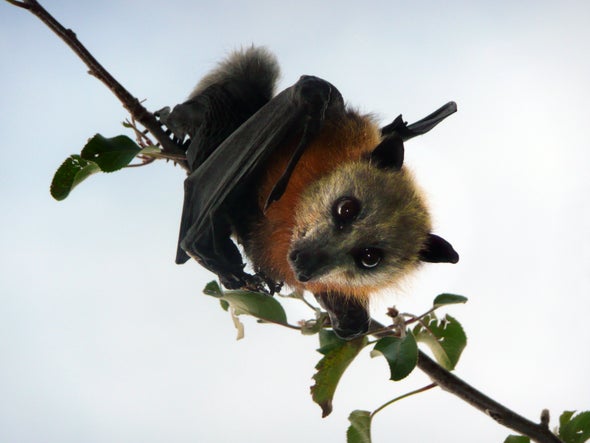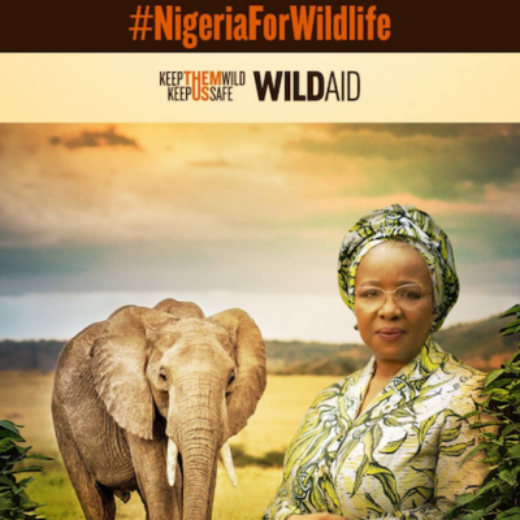


- Flying Fox. Credit: Alexander W. Helin Getty Images
In reaction to the global COVID-19 pandemic, attention has focused on the potential role of the Convention on International Trade in Endangered Species of Wild Fauna and Flora (CITES) to further regulate—or ban—various form of the wildlife trade. Banning the wild animal trade, particularly for human consumption, means stopping the movement of some zoonotic diseases—infections that can be transmitted from animals to humans.
There have also been suggestions that the World Health Organization (WHO), the United Nations’ Food and Agriculture Organization (FAO), or the World Organization for Animal Health (OIE) could be instructed by governments to collaborate to prevent future zoonotic epidemics and pandemics. Other options include a protocol to the Convention on Biological Diversity (an umbrella treaty, adhered to by all but one party to CITES) or a protocol under the U.N. General Assembly. But with little experience dealing with transport of terrestrial wild animals, these bodies simply lack the expertise and infrastructure needed to regulate the international trade of wild animals.
Still others have suggested that a new global treaty could be negotiated to focus specifically on preventing another zoonotic pandemic. While we believe that the ideal approach to minimize the risk of another animal-origin pandemic would be the creation of a global One Health agreement, to comprehensively address human, veterinary and wildlife health issues at local, national and international levels, we recognize that some proposed immediate measures are focused on using CITES and its existing infrastructure.
So, can CITES—a treaty focused on the conservation of fauna and flora through the regulation of international trade—be used to regulate the trade in wild animals to protect human health? Many have weighed in on the role or non-role of CITES in managing the international wildlife trade to minimize zoonotic disease transmission risk. Some discourage any attempt to use CITES in this area, while others argue that CITES can evolve into an appropriate mechanism.
One thing is certain: CITES has a global mandate, with 183 signatory governments, 45 years of experience regulating international wildlife trade, and a global system for monitoring and recording trade, and for promoting efforts to combat trafficking; this mandate is binding on all of its signatory parties. CITES infrastructure, expertise and reach are unparalleled globally. Neither the text of CITES nor any of the interpretive documents agreed by the signatory countries over the past 45 years has any direct relation to zoonotic disease issues. CITES regulates international trade in wildlife, but it only does so for the reasons of species conservation and ensuring the legality of the specimens being traded.
Nowhere in the text of the convention are parties obliged to restrict trade for any purpose other than “for the protection of certain species of wild fauna and flora against over-exploitation through international trade.” In keeping with the unequivocal limitations of its text, CITES’ requirements and authorities cannot be adopted outright to regulate or ban trade in animals on the grounds that they pose a risk to human health, such as zoonotic disease transfer.
Some CITES analysts have proposed that the treaty should be amended to include new language in the convention text which would expand its remit to include the regulation of trade in animals presenting a risk of zoonotic disease transfer. However, there are widespread concerns that opening the original text of CITES to change could release a flood of additional proposed amendments with language that could undermine the current interpretation, implementation, enforcement and effectiveness of CITES.
If adoption and amendments are off the table, that leaves one good remaining option to use CITES to prevent zoonotic disease transfer: adaptation. The best way to adapt CITES to address zoonotic disease risk is through an addendum to the treaty itself: additive text covering zoonotic diseases and international trade.
Such an addendum could be crafted to functionally override CITES’ original language and impose a new requirement on CITES’ parties to regulate wildlife trade specifically to mitigate the risks of spreading zoonoses through international trade. The original text of CITES would remain safely shielded from deleterious amendments, while the addendum could provide a specific mandate to address the commercial international trade in specimens with a focus on the risk of zoonotic diseases.
The risk of zoonoses (including spillover, recombinations and transmission) is not spread evenly across the spectrum of wild animal trade; freshwater mussel shells, used to seed oysters in the pearl industry, or alligator skins destined for luxury leather products, do not carry the same risk as, say, live bats, primates, rodents or birds.
The ears and eyes of epidemiologists and public health officials perk up if we’re talking about live mammals and birds, and even reptiles and amphibians, which are known or presumed to have been involved in the origin and spread of diseases as diverse and severe as brucellosis, COVID-19, cryptosporidiosis, Ebola, E. coli, MERS, Nipah Virus, salmonella, SARS and West Nile Virus.
Mechanically, addressing zoonotic risk in wild animal trade could be done in an addendum based on “reverse listing”—an approach in which any live wild animal (or potentially infectious animal tissue) cannot be traded internationally, until specifically determined to be of low zoonotic disease risk. Under a reverse-listing system all wild animal species or body parts are presumed high-risk until it is determined that they are safe to trade. Of course, the listing of “all” species could be limited to mammals and birds or any other specific group of animals, while exempting other groups or specific categories of products, parts or derivatives in trade; or it could refer to live animals only. The addendum should not be used to eliminate or obstruct low-risk trade. And for “cleared species” or products and groups of animals not included in an addendum, the safeguards in the original CITES treaty against overexploitation would remain applicable.
Whether changes to CITES to address the international trade in wild animals to prevent zoonotic epidemics and pandemics could be made is impossible to know until governments, intergovernmental organizations and civil society begin the long-overdue conversation about the necessary steps to alleviate the risk of zoonotic disease transfer and emergence.
Whether one supports the precautionary principle or the concept of sustainable utilization, it is no longer tenable to ignore the third leg of the stool in this debate—the control of zoonotic disease emergence and transfer, potentially leading to another pandemic.
Ideally, a new international treaty or protocol could be developed to address zoonotic disease risk and could be so broad as to also cover domestic animals, which are essentially excluded from CITES’ mandate (and which also pose a high zoonotic risk when sold live and slaughtered on-site in large commercial food markets). But drawing up and ratifying such a new treaty could take far too long to prevent the next pandemic.
The most significant reason why CITES is better positioned to address high zoonotic-risk wild animal trade than other existing mechanisms is its 45 years’ maturity of architecture, processes, infrastructure, expertise and experience regulating and enforcing international wildlife trade standards. The refined global implementation system for CITES would give the nations of the world a huge head start in implementing any new protocols to combat the transfer of zoonotic diseases. Leaving CITES out of the solution means abandoning the only global system of wildlife trade regulation and enforcement in existence, and that would be a loss not easily or quickly replaced.
Stay in touch and get the latest WildAid updates.
SIGN UP



